In this, the first of two blogs, we revisit the main ways in which SMEs can benefit from transitioning to cloud accounting, with observations about our experience over the past 12 months.
The benefits of cloud accounting can be summarised as:
- The ability to access and enter data from any location at any time, provided there is an internet connection
- The availability of real-time information
- Improved cash flow
- Savings in software and maintenance costs
- Access to accounting data by multiple users Improved data back up and security
This week we revisit the first three of these points.
Accessing data on the move
Provided an internet connection is available, data can be entered and accessed from any location, at any time. The user is not required to go to their place of work to enter transactions or to retrieve reports. This accommodates flexible working, allowing greater freedom both in business and personally, offering opportunities for an improved work/life balance.
Our experience over the last 12 months:
We’ve seen access on the move to be of huge benefit during school holidays or breaks. Parents who, in the past, have been reluctant to spend time away from the office, and in particular those who work in the accounting function, now use online access to bridge some of the work/life balance gaps.
Real-time information
Data entered into the cloud is updated immediately and can be accessed by multiple users from multiple locations. This allows the business to make operational and strategic decisions based on the very latest financial information. Real-time information helps the monitoring of cash inflows and outflows at the click of a button. This has been proven to reduce debtor days because the business has more accurate information about aging sales debt.
Our experience over the last 12 months:
We’ve been advised by businesses that their data is more up to date than ever before, meaning they have more confidence in knowing what money is owed to them at any given time. They have, therefore, been able to chase sales debts sooner, resulting in reduced debtor days and improved cash balances.
Improved cash flow
As the software subscription is paid for on a monthly basis, there is no large upfront cash outlay. The subscription can be managed through your accountant which in most cases, due to economies of scale, means that you pay less than if the business were to make a direct payment to the software provider.
Our experience over the last 12 months:
Businesses no longer need to worry about the annual software fee. Fees are known and paid for on a monthly basis and become part of monthly cashflows. A significant number of businesses have sourced licences through us resulting in substantial savings.
The information provided in this blog is for general informational purposes only and should not be considered professional advice. As far as we are aware, the content is accurate at time of publication. Torgersens assumes no responsibility for errors or omissions in the content or for any actions taken based on the information provided.


.jpg)
.jpg)
.jpg)



